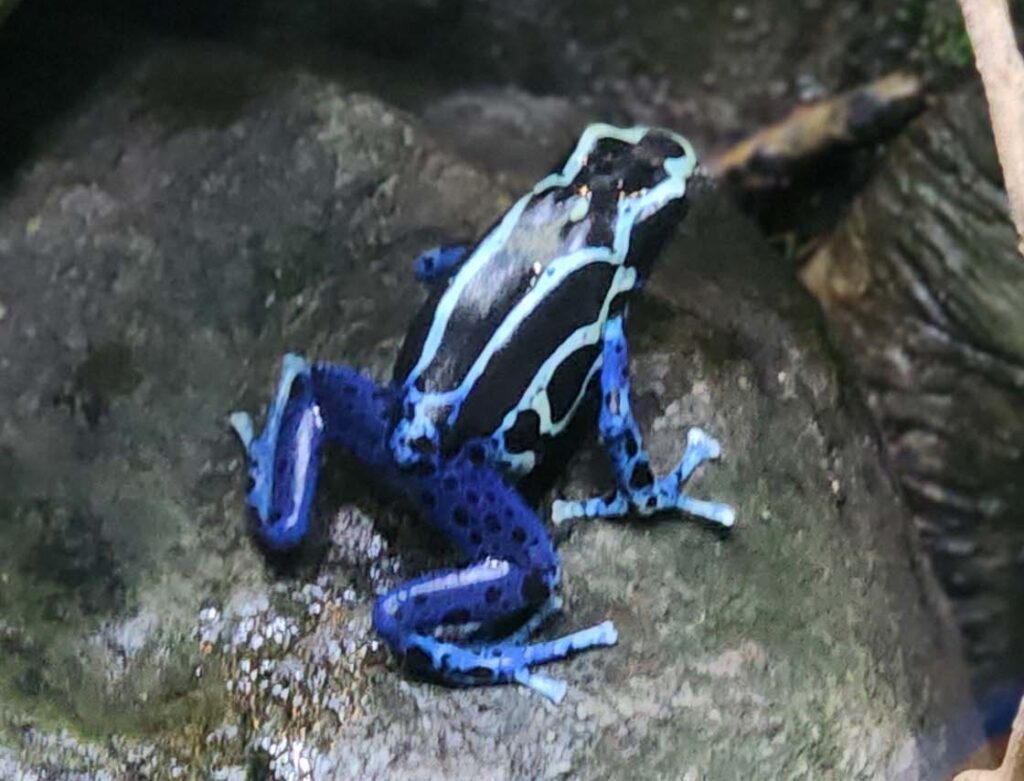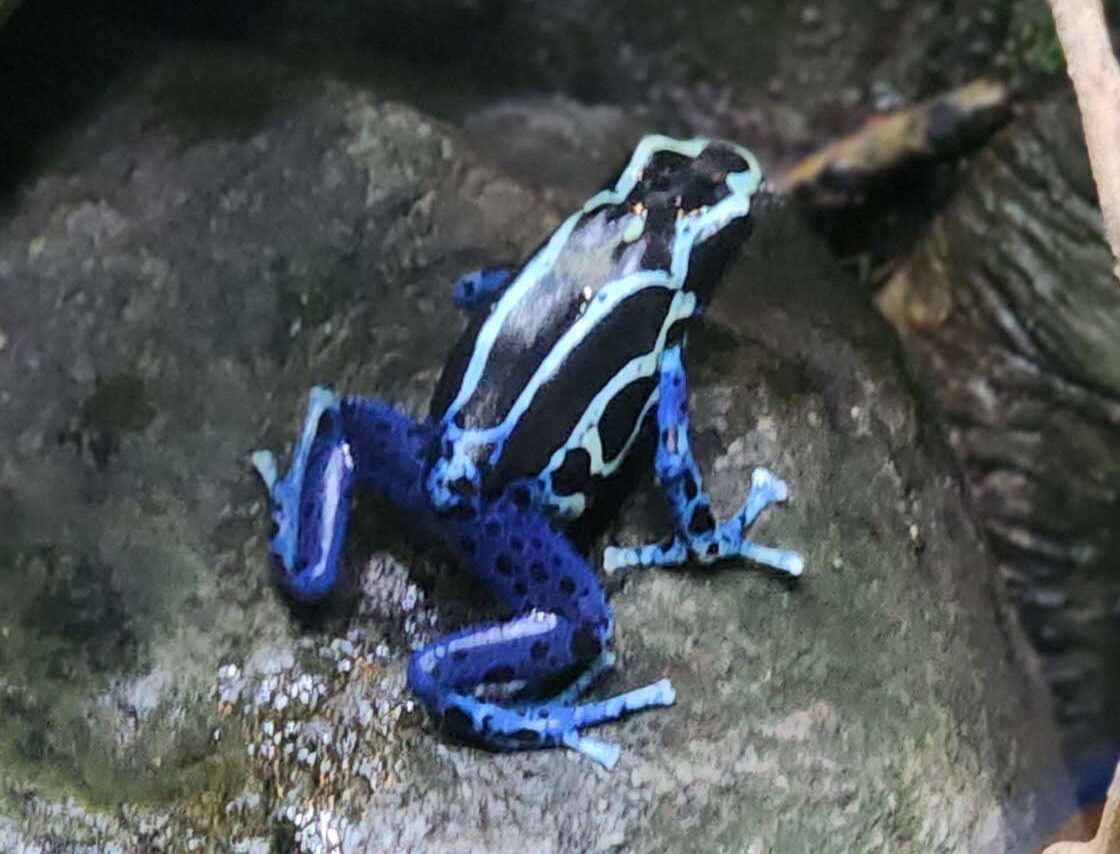Poison dart frog
Poison dart frogs, also known as poison arrow frogs, are a group of small, brightly colored frogs native to Central and South America. Here’s a description of their distribution:
- Central America: Poison dart frogs are found in several countries in Central America, including Costa Rica, Panama, Nicaragua, Honduras, and Belize. They inhabit tropical rainforests, humid forests, and other moist habitats in these countries.
- South America: Poison dart frogs are also found in various countries in South America, including Colombia, Ecuador, Venezuela, Brazil, Peru, and Suriname. They inhabit rainforests, tropical forests, and other forested areas across the continent.
Poison dart frogs are known for their vibrant colors, which serve as a warning to potential predators of their toxic skin secretions. These toxins, known as alkaloids, are derived from the frogs’ diet of ants, mites, and other small invertebrates. While not all species of poison dart frogs are lethal to humans, some have potent toxins that can cause serious harm or even death if ingested or if the toxins come into contact with mucous membranes or open wounds.
Despite their small size, poison dart frogs play important roles in their ecosystems as both predators and prey. They feed on insects and other small invertebrates, helping to control their populations, and they are also preyed upon by birds, snakes, and other predators.
Conservation efforts are underway to protect poison dart frog habitats and raise awareness about the importance of preserving these iconic and fascinating amphibians. However, habitat loss, pollution, and collection for the pet trade continue to threaten some species of poison dart frogs with extinction.



